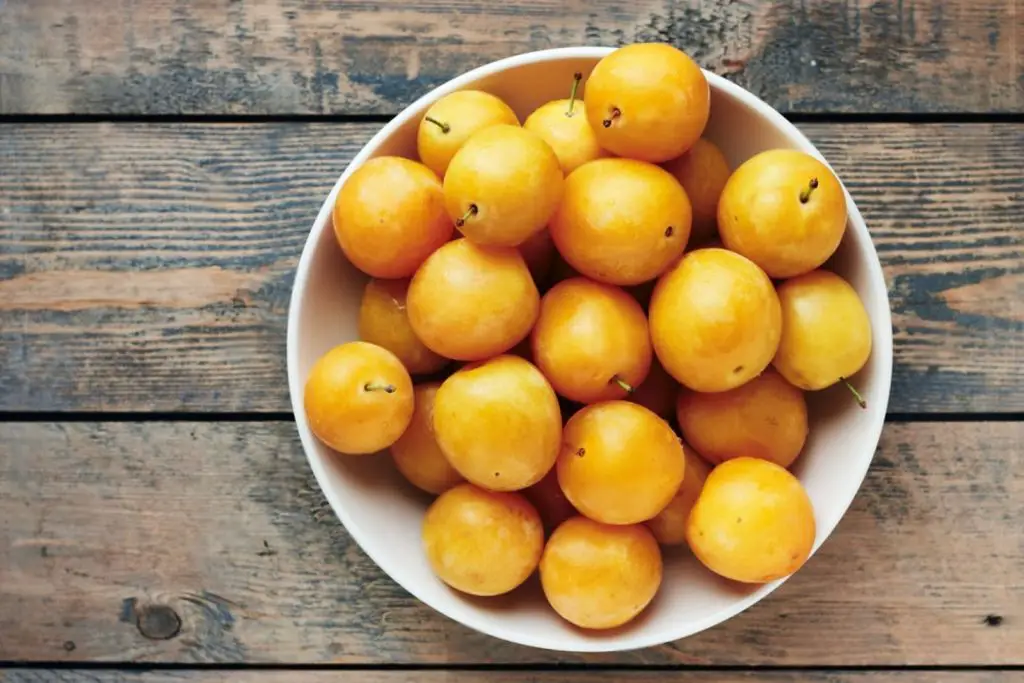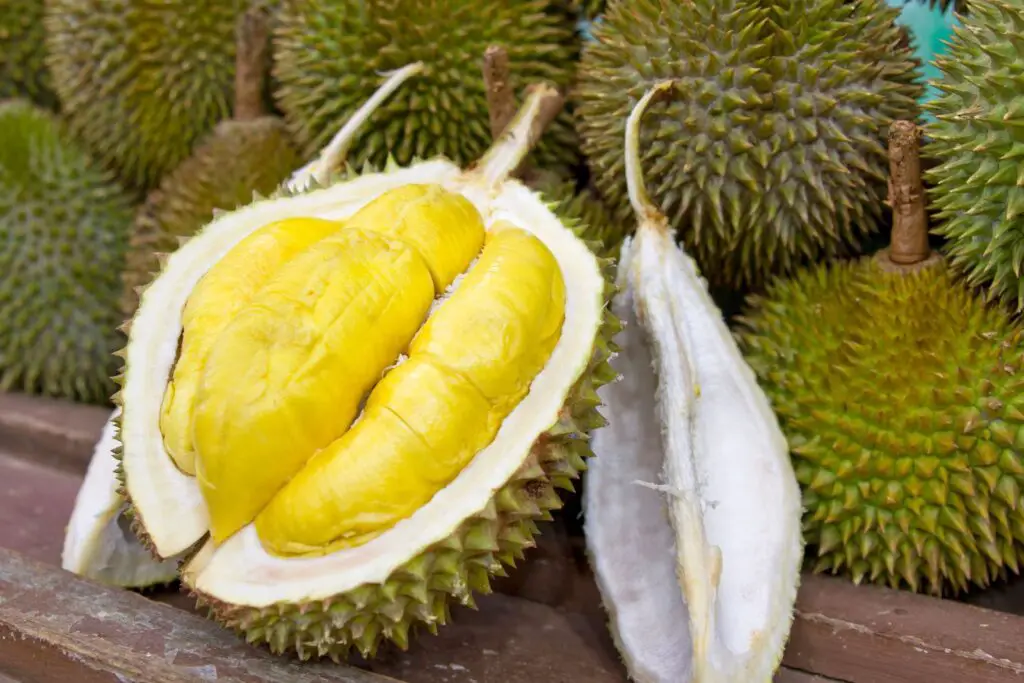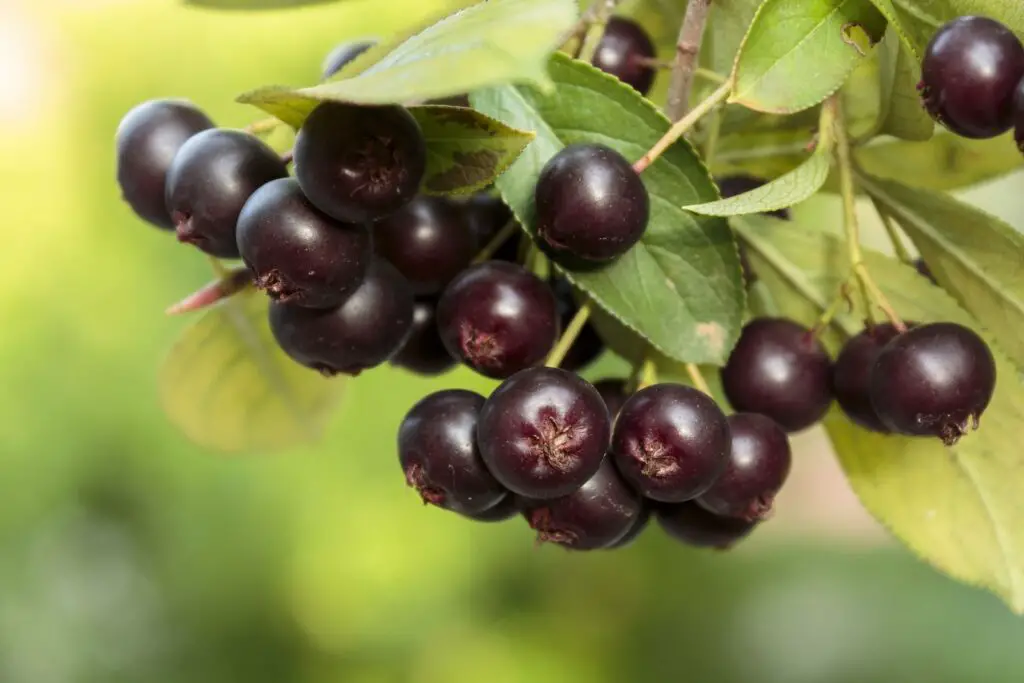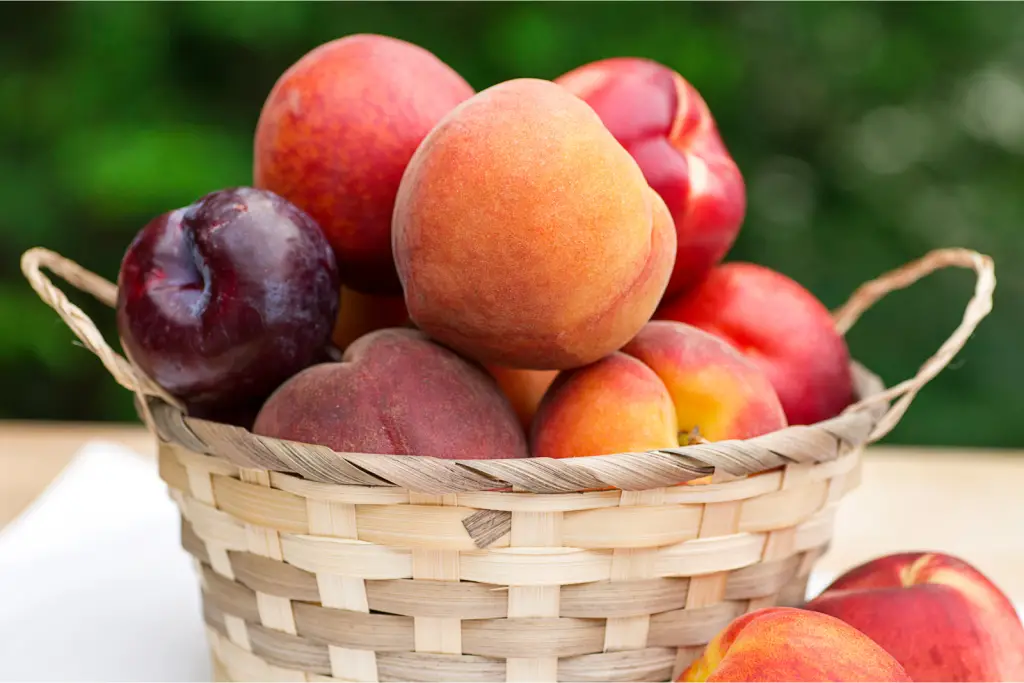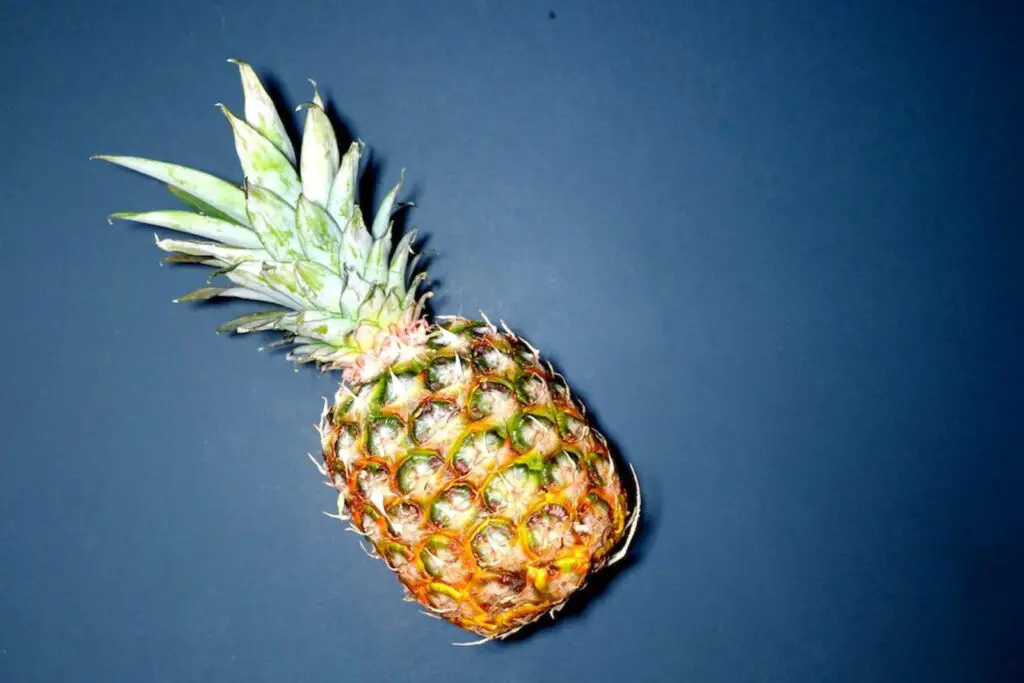
Calamansi is a small citrus fruit native to Southeast Asia. It is widely used in cooking and beverages due to its tangy and aromatic flavor. Freezing calamansi is an excellent way to preserve its freshness and ensure that you have a ready supply of this versatile fruit even when it’s out of season. By following a few simple steps, you can freeze calamansi effectively while retaining its desired taste and quality. This article provides a comprehensive guide on freezing calamansi to help you enjoy its delightful flavor all year round.
Here’s a step-by-step guide on how to freeze calamansi:
Step 1: Select ripe calamansi fruits
When freezing calamansi, it is important to start with ripe fruits to ensure optimal flavor and quality. Ripe calamansi fruits have reached their peak of sweetness and acidity, making them more enjoyable to consume. Here’s why selecting ripe calamansi fruits is essential:
- Flavor: Ripe calamansi fruits have a more pronounced and vibrant flavor compared to underripe ones. They are known for their tangy and aromatic taste, which adds a refreshing and citrusy zing to dishes and beverages. Choosing ripe calamansi ensures that the frozen fruit will retain its characteristic flavor even after freezing.
- Texture: Ripe calamansi fruits have a firm texture that is ideal for freezing. They are easier to handle and maintain their shape during the freezing process. The firmness of ripe calamansi fruits helps preserve their integrity and prevents them from becoming mushy or losing their juiciness when thawed.
- Color: Ripe calamansi fruits exhibit a bright orange color. This vibrant hue indicates that the fruit is fully matured and packed with the essential nutrients and antioxidants that calamansi is known for. The color also adds visual appeal to dishes and beverages when using frozen calamansi slices or zest.
- Quality: Ripe calamansi fruits are less likely to have bruises, blemishes, or other signs of damage. Choosing fruits that are free from any imperfections ensures that the frozen calamansi will have a consistent texture and flavor. It also prevents any unwanted flavors or spoilage that may arise from damaged fruits.
- To select ripe calamansi fruits, look for those with a vibrant orange color and a firm texture. Avoid fruits that are overly soft, as they may be overripe or starting to spoil. It is also essential to inspect the fruits for any signs of bruising, mold, or other damage, as these can affect the quality of the frozen calamansi.
Can I freeze whole calamansi fruits?
It is not recommended to freeze whole calamansi fruits. The high water content of the fruit can cause the calamansi to burst when frozen, resulting in a mushy texture and loss of flavor. Additionally, the thick peel of the calamansi can make it difficult for the fruit to freeze evenly. It is best to extract the juice or zest from the calamansi before freezing for optimal results.
Step 2: Wash and dry the fruits
Before freezing calamansi fruits, it is crucial to wash them thoroughly to remove any dirt, debris, or potential contaminants. This step ensures that the frozen calamansi will be clean and safe to use. Here’s why washing and drying the fruits is important:
- Hygiene: Washing calamansi fruits helps eliminate any surface dirt, bacteria, or pesticides that may be present. Even if you plan to peel or zest the fruits before freezing, washing them ensures that any contaminants on the outer surface are removed, reducing the risk of introducing unwanted substances into the frozen calamansi.
- Flavor preservation: Washing the calamansi fruits helps maintain their natural flavor. By removing any residues or impurities from the skin, you ensure that the frozen calamansi will taste fresh and unadulterated. This step is particularly important if you plan to use the zest or the whole fruit in your recipes.
- Safety: Washing the fruits helps remove any potential pathogens that may be present on the surface. While calamansi is generally safe to consume, washing the fruits reduces the risk of foodborne illnesses that can occur if harmful bacteria or contaminants are present.
To wash calamansi fruits, follow these steps:
- Rinse under running water: Hold the calamansi fruits under cool, running water. Gently rub the surface of each fruit with your fingers to dislodge any dirt or debris.
- Scrub if necessary: For stubborn dirt or residue, you can use a soft brush to scrub the fruits gently. This is particularly useful if you plan to use the zest, as it helps remove any waxy coatings or residues that may be present.
- Inspect for cleanliness: After washing, visually inspect the calamansi fruits to ensure they are clean and free from any visible impurities.
Once the calamansi fruits are washed, it is important to dry them thoroughly before freezing. Drying the fruits helps remove excess moisture, which can lead to the formation of ice crystals during freezing. Here’s how to dry the calamansi fruits:
- Pat dry: Place the washed calamansi fruits on a clean kitchen towel or paper towels. Gently pat them dry using the towel, absorbing any moisture present on the surface.
- Air-dry if desired: If you prefer, you can also leave the calamansi fruits to air-dry for a short period. Simply place them on a clean countertop or drying rack and allow them to dry naturally.
Should I peel the calamansi before freezing?
It is generally recommended to peel the calamansi before freezing. The peel of the calamansi contains oils that may become bitter when frozen, affecting the overall flavor of the fruit. By removing the peel, you can also conveniently access the juice or zest for future use. Freezing peeled calamansi segments or juice in an airtight container or ice cube tray will help preserve their freshness and prevent any unwanted texture or flavor changes.
Step 3: Extract the juice (optional)
When freezing calamansi, you have the option to extract the juice from the fruits before proceeding with the freezing process. Extracting the juice allows you to conveniently freeze it separately, providing a versatile ingredient that can be used in various recipes. Here’s why extracting the juice is optional and how to do it:
- Versatility: Calamansi juice is a highly versatile ingredient used in a wide range of culinary applications. By extracting the juice before freezing, you have the convenience of ready-to-use calamansi juice that can be added to sauces, dressings, marinades, beverages, or any recipe that calls for a tangy citrus flavor.
- Storage flexibility: Freezing calamansi juice separately from the whole fruits allows you to have more control over portioning and usage. You can freeze the juice in specific quantities, such as in ice cube trays, making it easier to incorporate into recipes without thawing an entire batch of calamansi.
- Concentrated flavor: Calamansi juice has a concentrated flavor that intensifies during freezing. By squeezing out the juice, you are capturing the essence of the fruit, allowing you to add a burst of calamansi flavor to your dishes even in small amounts.
To extract calamansi juice, follow these steps:
- Prepare the fruits: Cut the calamansi in half crosswise using a sharp knife. This exposes the juicy pulp inside.
- Squeeze the juice: Using a citrus juicer or by hand, apply gentle pressure to each half of the calamansi and squeeze out the juice. If using a citrus juicer, place the cut side of the fruit facing down on the juicer and press to extract the juice. If squeezing by hand, hold the calamansi half over a bowl and use your fingers to squeeze out the juice while being mindful of any seeds.
- Strain if desired: If you prefer seedless calamansi juice, you can strain it through a fine-mesh sieve or cheesecloth to remove any seeds or pulp. This step is optional and depends on your preference.
- Store the juice: Pour the extracted calamansi juice into freezer-safe containers or ice cube trays. Leave some headspace in the containers or compartments to allow for expansion during freezing.
Step 4: Flash-freeze the calamansi
Flash-freezing calamansi is an essential step in the freezing process that helps preserve the fruit’s texture, flavor, and individuality. By flash-freezing the calamansi, you ensure that each fruit or juice cube freezes quickly and independently, preventing them from sticking together and allowing for easy portioning. Here’s why and how to flash-freeze calamansi:
- Individual freezing: Flash-freezing calamansi fruits or juice cubes individually prevents them from clumping together during freezing. This way, you can easily retrieve the desired amount without having to thaw the entire batch.
- Texture preservation: Flash-freezing calamansi helps retain the fruit’s texture. The quick freezing process minimizes the formation of large ice crystals, which can lead to cell damage and affect the calamansi’s texture when thawed. By freezing the fruits or juice cubes separately, you maintain their individual integrity and quality.
- Convenient portioning: Flash-freezing calamansi fruits in a single layer or pouring the juice into ice cube trays allows for convenient portioning. Once frozen, you can transfer the individually frozen fruits or juice cubes to freezer-safe containers or bags without the risk of them sticking together. This way, you can easily retrieve the desired amount for your recipes or beverages.
To flash-freeze calamansi, follow these steps:
- Whole calamansi fruits: Place the washed and dried calamansi fruits in a single layer on a baking sheet or tray lined with parchment paper. Ensure that the fruits are not touching each other, allowing air circulation and preventing them from freezing together.
- Calamansi juice: If you extracted the juice, pour it into ice cube trays. Leave some space in each compartment for expansion during freezing. If desired, cover the ice cube trays with plastic wrap or aluminum foil to protect the juice from odors or freezer burn.
- Arrange for freezing: Place the baking sheet with the whole fruits or the ice cube trays with the juice in the freezer. Make sure they are on a flat surface and positioned in a way that allows for even airflow.
- Flash-freezing time: Allow the calamansi fruits or juice cubes to freeze for approximately 2 to 4 hours, or until completely solid. The freezing time may vary depending on the size of the fruits or the thickness of the juice cubes.
Step 5: Freeze the calamansi
After flash-freezing the calamansi fruits or juice cubes, the next step is to transfer them to the freezer for the final freezing process. Freezing the calamansi completely ensures that they are preserved at the optimal temperature, maintaining their quality and extending their shelf life. Here’s why and how to freeze the calamansi:
- Temperature preservation: Placing the calamansi fruits or juice cubes in the freezer ensures that they are stored at a consistently low temperature, preventing the growth of microorganisms that can cause spoilage. Freezing halts enzymatic activity, preserving the flavor, texture, and nutrients of the calamansi.
- Extended shelf life: Freezing the calamansi allows you to enjoy the fruits or juice cubes for an extended period. When properly frozen, calamansi can maintain its quality for up to several months, allowing you to have a supply of this versatile fruit even when it is out of season.
- Convenience: Freezing the calamansi enables you to have readily available portions of the fruit or juice cubes for use in various recipes of beverages. It eliminates the need to constantly purchase fresh calamansi, as you can conveniently retrieve the desired amount from the freezer whenever needed.
To freeze the calamansi, follow these steps:
- Transfer to the freezer: Carefully place the baking sheet or tray with the flash-frozen calamansi fruits or ice cube trays with the juice into the freezer.
- Freezing time: Allow the calamansi to freeze completely, which usually takes about 2 to 4 hours. The exact freezing time may vary depending on the size of the fruits or juice cubes and the efficiency of your freezer. Ensure that they are frozen solid and firm to the touch before proceeding.
- Check for readiness: To determine if the calamansi fruits or juice cubes are completely frozen, gently touch one of them. It should feel solid and not yield to pressure. If they are not frozen solid, leave them in the freezer for a bit longer until they reach the desired consistency.
Step 6: Transfer to freezer-safe containers
After the calamansi fruits or juice cubes are completely frozen, it’s time to transfer them into freezer-safe containers or resealable plastic bags. This step helps protect the calamansi from freezer burn, maintain their quality, and make efficient use of freezer space. Here’s why and how to transfer the frozen calamansi:
- Protection from freezer burn: Freezer burn occurs when moisture evaporates from the surface of frozen food, causing it to become dehydrated and develop unappetizing textures and flavors. Transferring the frozen calamansi into proper containers helps minimize the exposure to air, reducing the risk of freezer burn and preserving their quality over time.
- Maintain quality and flavor: Proper packaging of the frozen calamansi helps maintain their texture, flavor, and aroma. By minimizing contact with air, you prevent the loss of moisture and the absorption of unwanted odors from the freezer, ensuring that the calamansi remains fresh and full of citrus goodness.
- Efficient use of freezer space: Transferring the calamansi into containers or bags allows you to organize and stack them neatly in the freezer. This maximizes the use of available space, making it easier to locate and retrieve the desired amount of calamansi when needed.
To transfer the frozen calamansi, follow these steps:
- Prepare freezer-safe containers: Select freezer-safe containers or resealable plastic bags that are appropriate in size for the amount of calamansi you have. Ensure they have tight-fitting lids or are designed for freezer use.
- Portion the calamansi: If you have whole frozen calamansi fruits, you can place them directly into the containers or bags. If you have frozen calamansi juice cubes, remove them from the ice cube trays and gather them for packaging.
- Remove excess air: For containers, press down gently on the fruits or juice cubes to remove any excess air. For resealable plastic bags, carefully squeeze out as much air as possible before sealing them tightly. This helps minimize the risk of freezer burn.
- Seal and label: Securely seal the containers or bags to prevent any leaks or air exposure. If desired, label the containers or bags with the contents and the date of freezing for easy reference.
- Organize in the freezer: Place the sealed containers or bags in a designated area in the freezer, arranging them in a way that optimizes space and allows for easy retrieval.
After transferring the frozen calamansi into freezer-safe containers or bags, it’s important to label and date them. Labeling helps you keep track of their freshness, distinguish between different types of calamansi products (such as whole fruits or juice cubes), and maintain an organized freezer inventory. Here’s why and how to label and date the packages:
- Freshness tracking: Calamansi, like any frozen food, has a limited shelf life. By labeling the packages with the date of freezing, you can easily monitor how long they have been in the freezer. This allows you to prioritize the use of older calamansi first and maintain a rotation system, ensuring that you consume them before their quality starts to decline.
- Differentiation of products: If you extracted the juice and have separate containers for whole calamansi fruits and juice cubes, labeling helps differentiate between them. Indicating whether it’s fresh calamansi juice or frozen juice cubes allows you to quickly identify and select the desired form for your recipes or beverages.
- Organization and inventory management: Labeling the packages contributes to an organized freezer inventory. It enables you to easily locate and retrieve the specific calamansi product you need without confusion. Additionally, clear labeling provides an overview of the available stock, helping you plan your meals or restock accordingly.
To label and date the packages, follow these steps:
- Use a marker or labels: Choose a marker suitable for writing on freezer-safe containers or bags. Alternatively, you can use adhesive labels that adhere well to the packaging materials.
- Write the date: On each container or bag, write the date of freezing. Include the day, month, and year to provide a clear reference for the freshness of the calamansi.
- Specify the type of product: If you have separate packages for whole calamansi fruits and juice cubes, indicate whether it’s fresh calamansi juice or frozen juice cubes on the respective containers or bags. This helps you quickly identify the desired form of calamansi.
- Optional additional information: If desired, you can add additional information such as the quantity of calamansi or any specific details you find useful for your organizational purposes.
- Ensure visibility: Make sure the labeling is clear and visible. Place the labels or write directly on the containers or bags in a prominent area for easy reading.
Step 7: Label and date the packages
After transferring the frozen calamansi into freezer-safe containers or bags, it’s important to label and date them. Labeling helps you keep track of their freshness, distinguish between different types of calamansi products (such as whole fruits or juice cubes), and maintain an organized freezer inventory. Here’s why and how to label and date the packages:
- Freshness tracking: Calamansi, like any frozen food, has a limited shelf life. By labeling the packages with the date of freezing, you can easily monitor how long they have been in the freezer. This allows you to prioritize the use of older calamansi first and maintain a rotation system, ensuring that you consume them before their quality starts to decline.
- Differentiation of products: If you extracted the juice and have separate containers for whole calamansi fruits and juice cubes, labeling helps differentiate between them. Indicating whether it’s fresh calamansi juice or frozen juice cubes allows you to quickly identify and select the desired form for your recipes or beverages.
- Organization and inventory management: Labeling the packages contributes to an organized freezer inventory. It enables you to easily locate and retrieve the specific calamansi product you need without confusion. Additionally, clear labeling provides an overview of the available stock, helping you plan your meals or restock accordingly.
To label and date the packages, follow these steps:
- Use a marker or labels: Choose a marker suitable for writing on freezer-safe containers or bags. Alternatively, you can use adhesive labels that adhere well to the packaging materials.
- Write the date: On each container or bag, write the date of freezing. Include the day, month, and year to provide a clear reference for the freshness of the calamansi.
- Specify the type of product: If you have separate packages for whole calamansi fruits and juice cubes, indicate whether it’s fresh calamansi juice or frozen juice cubes on the respective containers or bags. This helps you quickly identify the desired form of calamansi.
- Optional additional information: If desired, you can add additional information such as the quantity of calamansi or any specific details you find useful for your organizational purposes.
- Ensure visibility: Make sure the labeling is clear and visible. Place the labels or write directly on the containers or bags in a prominent area for easy reading.
Step 8: Store in the freezer
Once you have labeled and dated the containers or bags of frozen calamansi, it’s time to store them in the freezer. Proper storage ensures that the calamansi remains in optimal condition and is easily accessible whenever you need it. Here’s why and how to store the frozen calamansi in the freezer:
- Maintaining quality: Storing the frozen calamansi properly in the freezer helps maintain its quality and extends its shelf life. The low temperature of the freezer preserves the flavor, texture, and nutrients of the calamansi, allowing you to enjoy its freshness even after an extended period.
- Easy access and organization: Positioning the containers or bags in a way that allows for easy access ensures that you can retrieve the desired amount of calamansi conveniently. Organizing them in a designated area of the freezer prevents them from being misplaced or buried under other items, making it efficient to locate and use the frozen calamansi whenever needed.
- Prevention of damage: Placing the containers or bags in a manner that prevents them from being crushed or damaged is crucial. Avoid stacking heavy items on top of the calamansi packages, as this can lead to deformation or breakage. Proper positioning ensures that the calamansi remains intact and maintains its quality during storage.
To store the frozen calamansi in the freezer, follow these steps:
- Choose a suitable spot: Select a designated area in the freezer where you will store the calamansi. Consider the available space and ensure it is easily accessible.
- Position containers or bags: Place the labeled containers or bags in the selected area of the freezer. Arrange them in a way that allows for easy access and prevents them from being crushed or damaged. Avoid stacking heavy items on top of the calamansi packages.
- Maintain organization: If you have multiple containers or bags of frozen calamansi, you can organize them by grouping them together or using dividers to separate different types of calamansi products. This helps maintain an organized freezer inventory and facilitates quick retrieval.
- Close the freezer: After storing the calamansi, ensure that the freezer door is securely closed to maintain a consistent temperature and prevent any fluctuations that could affect the quality of the frozen calamansi.
How long can I freeze calamansi?
You can freeze calamansi for up to six months without significantly affecting its quality. However, it is essential to note that the longer you freeze calamansi, the more its flavor and texture may deteriorate. To maintain the best quality, it is recommended to use frozen calamansi within three months. Proper storage in airtight containers or freezer bags will help preserve its flavor and prevent freezer burn.
What is the ideal freezing temperature in freezing calamansi?
The ideal freezing temperature for calamansi is below 0 degrees Celsius or 32 degrees Fahrenheit. Calamansi should be frozen at a temperature that ensures the fruit is completely frozen and preserves its freshness and quality. It is recommended to set your freezer to its coldest setting to achieve the optimal freezing temperature for calamansi. This low temperature helps to maintain the flavor, texture, and nutritional properties of the fruit during the freezing process.
Other related questions
How do I defrost frozen calamansi?
To defrost frozen calamansi, transfer the desired amount from the freezer to the refrigerator and allow it to thaw slowly. This gradual thawing helps maintain the quality of the fruit and prevents excessive moisture loss. Alternatively, if you need to use the calamansi immediately, you can thaw it by placing the frozen calamansi in a bowl of lukewarm water for a quicker thawing process. Avoid using heat or microwaving as it may affect the flavor and texture of the fruit. Once thawed, use the calamansi as desired in your recipes.
Can I refreeze previously thawed calamansi?
It is generally not recommended to refreeze previously thawed calamansi. Once calamansi has been thawed, it undergoes changes in texture and quality due to the moisture loss and potential oxidation. Refreezing it can further degrade the flavor, texture, and overall freshness of the fruit. It is advisable to use the previously thawed calamansi promptly or in recipes, rather than refreezing it, to ensure the best taste and quality.
How do I know if my frozen calamansi has gone bad?
To determine if frozen calamansi has gone bad, there are a few signs to look for. Firstly, check for any off-putting odor. If the calamansi emits a strong, sour, or foul smell, it is likely spoiled. Additionally, visually inspect the fruit for any signs of mold, discoloration, or freezer burn. If you notice any unusual colors, fuzzy growth, or excessive ice crystals, it is best to discard the calamansi. Lastly, trust your taste buds—if the flavor is off, rancid, or unpleasant, it’s a clear indication that the calamansi has gone bad and should not be consumed.
Can I use frozen calamansi with fresh ones?
Yes, you can use frozen calamansi with fresh ones in certain situations. If you are using the calamansi for cooking or baking purposes where the texture is not crucial, such as adding it to sauces, marinades, or dressings, combining frozen and fresh calamansi can work. However, keep in mind that the frozen calamansi may have a softer texture and slightly altered flavor compared to the fresh ones. It is advisable to thaw the frozen calamansi separately and adjust the quantity and taste according to your preference when combining them with fresh calamansi.
Can I freeze calamansi zest?
Yes, you can freeze calamansi zest. Calamansi zest is the outermost layer of the fruit’s peel, which contains aromatic oils and intense citrus flavor. Freezing the zest helps to preserve its freshness and flavor for a more extended period. It is recommended to grate or finely zest the calamansi before freezing and store it in an airtight container or freezer bag. When needed, you can easily access the frozen zest and use it in various recipes such as desserts, marinades, or cocktails.
Can I freeze calamansi slices or wedges?
Yes, you can freeze calamansi slices or wedges. Freezing calamansi in sliced or wedged form is a convenient way to preserve the fruit for later use. It is recommended to remove the seeds before freezing to prevent any bitterness. Lay the calamansi slices or wedges in a single layer on a baking sheet and freeze them until firm, then transfer them to a freezer-safe bag or container. This allows you to easily grab the desired amount of frozen calamansi for recipes or to add a burst of citrus flavor to drinks.
Can I freeze calamansi puree?
Yes, you can freeze calamansi puree. Freezing calamansi puree is a great way to preserve the fruit’s flavor and make it readily available for future use in various recipes. To freeze calamansi puree, simply blend or process the fruit until smooth and pour it into an airtight container or ice cube tray. Freezing in smaller portions, such as ice cube-sized portions, allows for easy portioning and thawing when needed.

